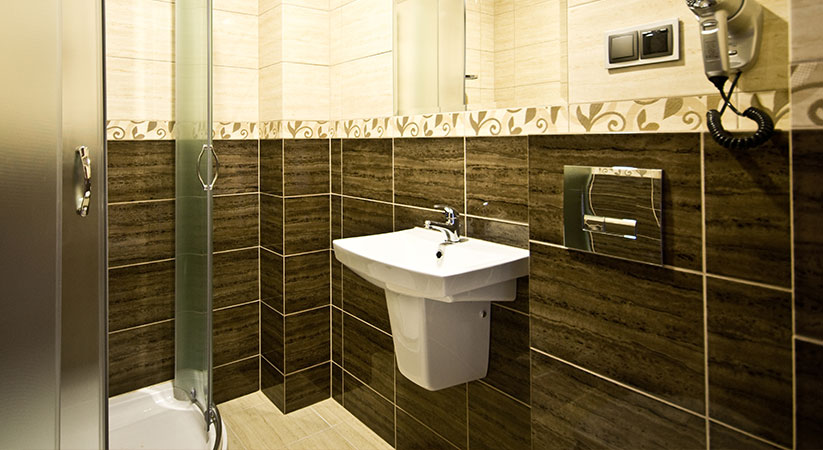Your hand is probably the most used part of your body and you use it for endless things, consciously and subconsciously. There is a junction of bones, joints, and nerves in your hands and wrists. If there’s a nerve damage there, you may need orthopedic surgeons to treat it. Here’s a helpful guide.
Nerve Damage Of The Hand And Wrist
The nervous system of the human body is essentially a network of transmitting signals from various parts of the body to the brain. The hand and wrist are undoubtedly the most important parts of the arm because the hands and fingers allow you to feel certain things and also grasp onto something. The wrist, on the other hand, is essential for rotating the hand and there are also a lot of veins, arteries, and nerves passing through the wrist, to the hand, and in the fingers.
Nerve damage is essentially the loss of sensation and rise of an uncomfortable feeling in the hand. This can include tingling, pinching, and a crawling sensation in the palm, fingers, and even the wrist. The nerves in these areas are unable to send any signals to the brain and the brain cannot process what the hand is touching, whether it’s something cold or hot, or if it’s trying to move or hold onto something. It’s a very complex mechanism and any damage to the nerve can cause severe issues.
Types Of Nerves In The Hand
There are 3 major types of nerves in the hand and wrist, and those include:
Median Nerve
The median nerve is probably the most important nerve of the hand. Firstly, this nerve allows the feeling of any sensation in the tips of the fingers mainly the first three fingers and the thumb. The action of holding something tight and releasing it with your fingers, like a rope, remote controller, piece of paper, etc., is all the work of the median nerve.
Radial Nerve
It controls the sensations in the thumb and the back of the hand. Anything you feel in these areas is sensed by the radial nerve. This nerve also helps in extending and flexing the fingers, wrist as well as forearm. It lies along the thumb, forearm, and wrist.
Ulnar Nerve
The ulnar nerve provides sensation in the rest of the fingers that the median nerve doesn’t cover and those include the half of the ring finger, the smallest aka pinky finger as well as the palm.
The movement of the knuckles and the rotating action of the fingers is all the work of the ulnar nerve. This nerve is also responsible for moving the small muscles between the bones of the hand, aka metacarpals.
Causes Of Nerve Damage Of The Hand And Wrist
There can be various causes of nerve injuries, like:
- Pressure injuries, like accidents
- Stretching injuries like sports that engage the hands
- Previous hand operations that involve cutting
The nerves are very complex because the small transmitters pass through a canal, in which the main nerves are encased. If there is no damage to the main canal, then the nerves might heal and the sensation may come back, after a certain period.
However, if the canal is damaged or collapsed either in a cutting injury, accident, or operation, then there is a very slim chance that the sensation will come back unless surgery is done to fuse the canal back together. There are different severities as far as nerve damage is concerned.
Sometimes, the nerves don’t need to be fused surgically and they can heal on their own. In other cases, however, an intervention must be done, otherwise a scar, also known as a neuroma, can form and that’s extremely painful. This is why assessing the injury is important so you can take the necessary steps. So, take help from a shoulder specialist Woodbridge who can diagnose the severity of the condition.
Symptoms Of Nerve Damage Of The Hand And Wrist
Here are the symptoms of nerve damage of the hand and wrist:
- The most obvious one is loss of sensation in the fingers and palm.
- There will be a tingly sensation in the fingers.
- There will be a weird crawling sensation inside the skin and it’s very uncomfortable.
- You can’t feel the temperature either. You can touch hot or cold things and even though the temperature will do external damage to the hand, there will be little to no sensation.
- If there is no sensation in the muscles, it can lead to paralysis if things get delayed.
Diagnosis Of Nerve Damage
Diagnosing nerve damage in the hand and wrist is very important because this is going to pave the path for treatment and how it’s going to be fixed, either surgically or non-surgically.
A physical examination is a preliminary test, in which a doctor will examine the palm and the hand for any sensation. This doesn’t necessarily rule out all possibilities of damage, but it is a good place to start.
After a physical examination, an MRI or EMG test helps a lot in getting a closer look at what’s going on inside the hand. A high-resolution test will tell the doctor the extent of the damage.
Treatment Of Nerve Damage Of The Hand And Wrist
The treatment options for hand and wrist nerve damage are as follows:
Physical Therapy
In case the canal is undamaged, the damaged part of the nerve can heal, although the sensation will be very minute. The nerve pathways can “forget” where to send signals and this needs to be rectified through proper physical therapy.
The sensation will come back, but it will be very subtle and you’ll need to rely on physical therapy for the rest of your life to ensure that more nerves don’t die.
Surgery
The first surgical method to rectify nerve damage to the hand and wrist is done when the canal is damaged. There is a clear line that shows the damage on the canal and it can be fused surgically. It’s a rather simple procedure and it’s not as invasive either. The severed ends are joined together and then it’s up to time to heal the joint.
Over time, the canal fuses up and there is a recurrence of sensation in the injured part of the hand. This surgery is important to do because if the canal is left untreated for too long, then it can lead to problems like paralysis, loss of sensation in the entire arm, and death of more nerves.
A more invasive procedure to fuse the severed nerve back together involves a nerve graft. This is done when a part of the nerve is lost. Due to this, a gap is formed between the two parts of the nerve. A nerve graft is essentially the joining of the two parts of the nerve with another nerve from the body. This procedure is very meticulous and the healing time is also lengthy.
Conclusion
Nerve damage is pretty common in the hands and wrist and these things will pinpoint exactly what the issue is. Delaying any treatment can cause damage to more nerves so if you have the symptoms, visit a hand injury doctor Woodbridge as soon as possible.








